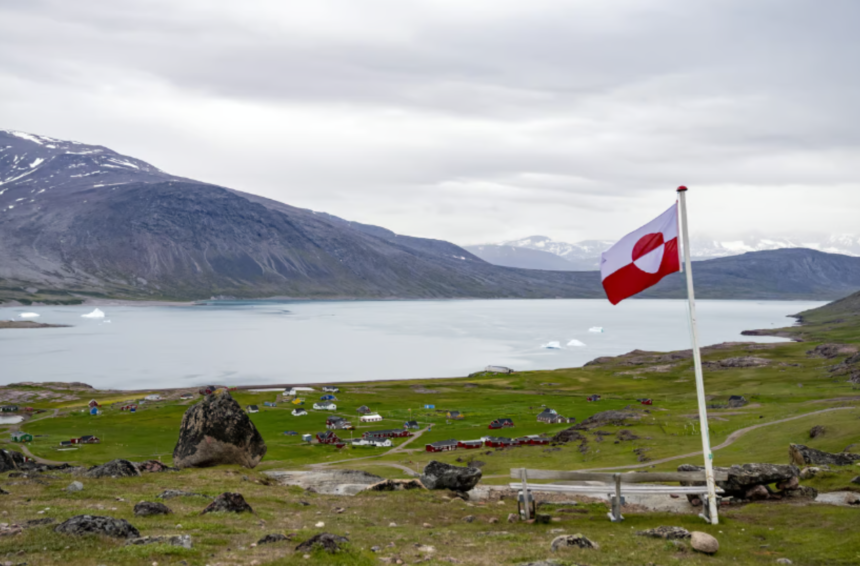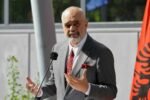Representatives from Greenland in the United States recently met with at least one ambassador from Pacific island states, also known as Oceania, to learn more about a political agreement that some believe could create an opportunity for the Arctic island and Washington, Voice of America has learned.
President Donald Trump has repeatedly expressed interest in purchasing or taking control of Greenland, a self-governing territory of Denmark rich in natural resources.
Trump has highlighted the strategic importance and position of the island in the Arctic Ocean, where Russia and China are making rapid advancements.
However, the American president’s comments have faced opposition from the island’s residents as well as political leaders in Denmark and Europe.
Greenland’s representatives have not commented to Voice of America about the meeting, which focused on a pact that the three Pacific island states have with Washington – known as the Compact of Free Association (COFA).
The agreement grants the United States military access to the three strategic Pacific islands – the Republic of the Marshall Islands, the Federated States of Micronesia, and the Republic of Palau – in exchange for economic aid.
Jackson Soram, ambassador of the Federated States of Micronesia to the United States, told VOA that discussions were held in late January and focused on key issues such as “economic aid provisions and those related to security and defense.”
Soram said he met with representatives from Greenland and the Faroe Islands, another self-governing Danish territory.
Alexander Grey, former chief of staff at the National Security Council during Trump’s first administration and involved in Pacific island affairs, told VOA that he encouraged the ambassadors from these islands to hold these meetings.
“Greenlanders want independence from Denmark,” Grey said in an email response. He is currently a partner at American Global Strategies.
“An independent Greenland, with a small population and the second-lowest population density on the planet, would quickly be dominated, and its sovereignty undermined by Beijing and Moscow,” he added.
Russia has reopened bases in the region, while Beijing has invested over $90 billion in infrastructure projects in the Arctic Circle. Both the United States and Denmark have military bases in Greenland.
Grey said that Moscow and Beijing’s dominance of the Arctic presents “a unique strategic threat” to the United States.
He added that a COFA “would allow Greenland to maintain its sovereignty while enabling the US to ensure that sovereignty is genuinely protected.”
Danish Prime Minister Mette Frederiksen has consistently stated that Greenland “is not for sale.”
However, on Monday, she said that Copenhagen welcomes additional military investments from the United States on the strategic island.
“So, if this is about ensuring security in the region, we can find a way to move forward,” she said.
US-Greenland Defense Agreement
Some analysts argue that neither Washington nor Greenland need a COFA agreement to enhance the US military presence on the island.
In 2004, the United States, Greenland, and Denmark signed the Igaliku Agreement to reduce the US military presence in Greenland to a single airbase, Thule Air Base, which was later renamed the Pituffik Space Base.
The agreement provides the US with missile defense protection and the ability to monitor space.
The 2004 agreement stipulates that “any significant change regarding US military operations or facilities” in Greenland must be done through a consultation process between Washington, Nuuk, and Copenhagen.
“Washington can achieve its goals by cooperating with Greenland and Denmark,” wrote Otto Svendsen, a researcher at the Center for Strategic and International Studies, on the center’s website last month.
During an informative meeting by the Danish Institute for International Studies in 2022, it was noted that the COFA agreement has created an economic dependency between the Marshall Islands and the United States, as American contributions make up about 70 percent of the Marshall Islands’ Gross Domestic Product.
This is the opposite of what Greenland’s leaders say they want.
In Search of Independence
A 2009 law called the Greenland Self-Government Act, drafted by Nuuk and Copenhagen, outlines the steps toward an independent Greenland, for which a referendum is required.
In his New Year’s speech, Greenland’s Prime Minister Mute Egede said that “the pre-election period, with citizen support, should be used to realize these steps” to hold a referendum during the parliamentary elections in April.
A 2019 poll suggested that more than two-thirds of Greenlanders want a moment when Greenland is independent. However, a survey published in January by two newspapers in Denmark and Greenland showed that 85 percent do not want to be part of the United States. Nevertheless, 55 percent see President Trump’s interest in Greenland as an opportunity.
Grey told VOA that the United States, Denmark, and Greenland should enter into trilateral discussions for an agreement.
“By working together, Washington, Copenhagen, and Nuuk can find common ground and move forward toward an agreement post-independence that works for all parties,” he said in an email response.
In 2010, Greenland informed the United Nations that it was considering negotiating the idea of independence through a “free association” with Denmark.
Prime Minister Egede has stated that he is willing to meet with President Trump but has said, “We don’t want to be Danish; we don’t want to be American.”
Ambassador Soram said he is trying to bring together ambassadors from the Palau archipelago and the Marshall Islands to participate in additional meetings with Greenland, the Faroe Islands, and Denmark. /VOA/







